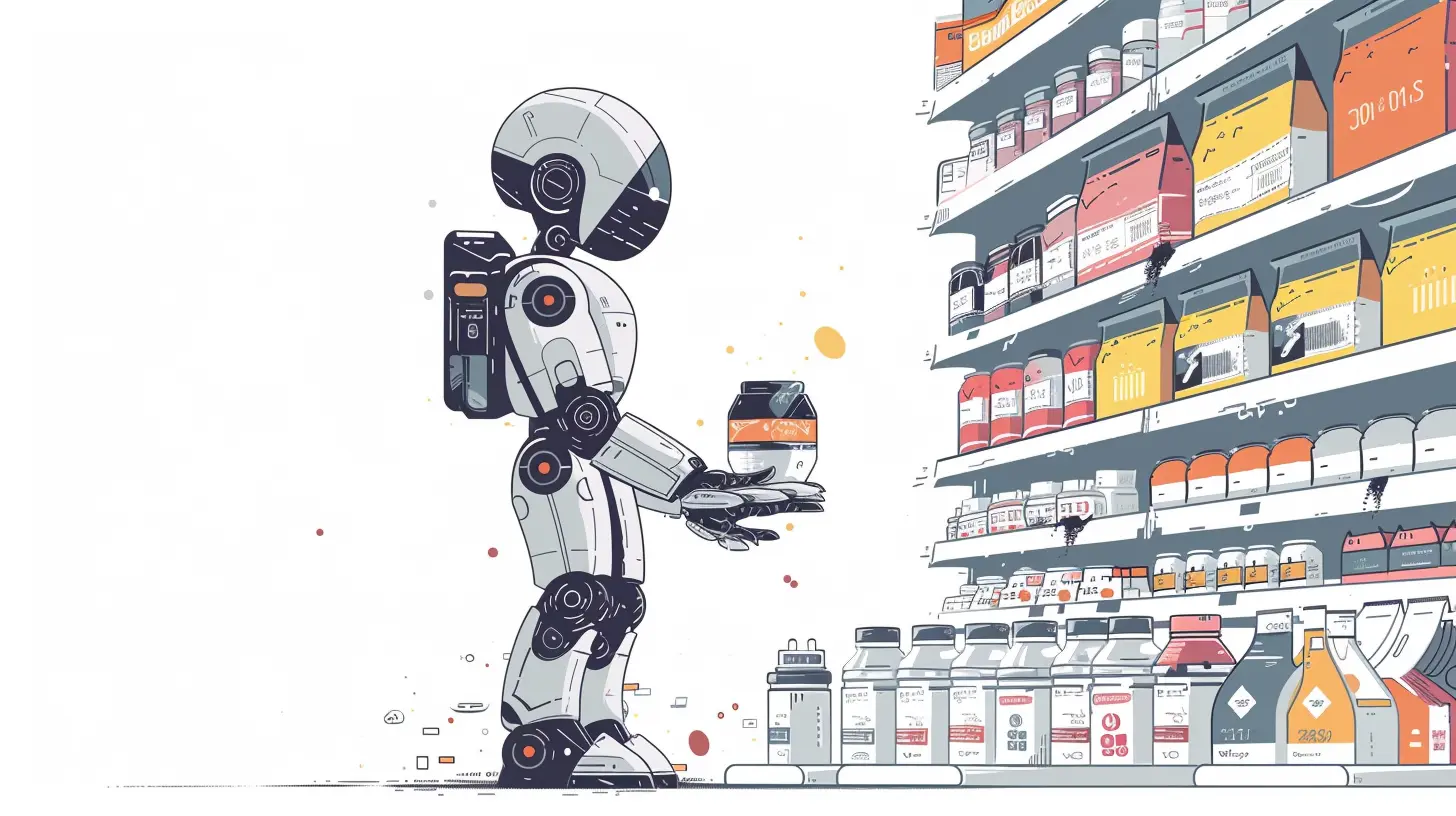The Role of Machine Learning in Predicting Consumer Behavior
8 May 2025
Predicting consumer behavior has always been crucial for businesses. From small mom-and-pop shops to multi-billion-dollar corporations, understanding what drives a customer’s decision can make or break a business strategy. That’s where machine learning comes into play. In today’s digital age, where data is the new oil and consumer behavior is more unpredictable than ever, machine learning is becoming a powerful tool for businesses to get a leg up on the competition.
But how exactly does machine learning fit into the picture? How does it help predict consumer behavior, and why should businesses care? Let’s dive into the fascinating world of machine learning and see how it’s reshaping the way companies understand their customers.

What is Machine Learning, Anyway?
Before we get into the nitty-gritty of predicting consumer behavior, let’s clear up what machine learning (ML) actually is. At its core, machine learning is a type of artificial intelligence (AI) that allows computers to learn from data without being explicitly programmed. Instead of following a strict set of rules, these systems improve over time by analyzing patterns in data.Think of it like teaching a friend to recognize different dog breeds. Instead of giving them a long list of characteristics for each breed, you show them thousands of pictures of dogs and gradually, they get better at identifying the breeds on their own. That’s pretty much how machine learning works — it gets smarter the more data it has.
Now, imagine applying that concept to consumer data. Every time a customer shops online, interacts with a brand’s social media, or even just browses a website, they leave behind valuable digital breadcrumbs. Machine learning can pick up these breadcrumbs, analyze them, and use them to predict what the customer might do next.
Why Should We Care About Predicting Consumer Behavior?
You might be wondering, why is there such a big fuss over predicting consumer behavior? Well, because it’s the holy grail of marketing and business strategy!Think about it: If you could predict what your customers wanted before they even knew it themselves, you’d be ahead of the game in delivering personalized experiences, making sales, and building brand loyalty. Knowing what drives a customer’s decisions can help businesses tailor their offerings, improve customer satisfaction, and increase revenue. It’s like having a crystal ball, but instead of magic, it’s data that’s doing the trick.
And here’s the kicker: consumer behavior isn’t static. It’s influenced by a myriad of factors, from social trends to personal preferences to economic conditions. Machine learning helps businesses stay agile by continuously learning and adjusting to new patterns in real-time.

How Does Machine Learning Help Predict Consumer Behavior?
Machine learning algorithms can sift through enormous amounts of consumer data — far more than any human could ever analyze. What’s more, they can do it quickly and efficiently, identifying trends and patterns that might not be immediately obvious. Let’s break down how machine learning is used to predict consumer behavior.1. Customer Segmentation
Ever heard the phrase, “not all customers are created equal”? That’s because different customers have different needs, preferences, and purchasing behaviors. Machine learning can analyze a demographic and behavioral data to divide customers into meaningful segments.For example, a clothing retailer might use machine learning to identify a group of customers who tend to buy new clothes around the holiday season but only from a discounted section. Knowing this, they can target that segment with personalized offers and recommendations around that time of year. Pretty smart, right?
2. Predicting Customer Churn
Customer churn is the bane of every business. It’s when customers stop doing business with you, and it’s costly! Predicting which customers are at risk of churning is crucial for businesses to take preemptive action. Machine learning algorithms can analyze behaviors like a drop in engagement, lack of recent purchases, or negative feedback to flag customers who might soon jump ship.Once identified, businesses can implement retention strategies, like personalized offers or improved customer service, to keep them on board. It’s way easier (and cheaper!) to retain a customer than to acquire a new one.
3. Personalized Recommendations
You’ve probably noticed how platforms like Netflix or Amazon seem to know exactly what you want to watch or buy next. That’s machine learning at work! These platforms use recommendation algorithms to analyze your past behaviors and suggest products or content that align with your preferences.Personalized recommendations are a game-changer because they make the shopping experience more relevant to the individual. Instead of bombarding customers with generic ads, businesses can serve up content that feels tailored just for them, increasing the likelihood of a purchase.
4. Dynamic Pricing
Ever noticed how the price of a flight or hotel room can change depending on when you check? That’s dynamic pricing, and it’s powered by machine learning. By analyzing factors like demand, competitor prices, and customer behavior, machine learning algorithms can adjust prices in real-time to maximize revenue.If a hotel notices that demand is skyrocketing due to an upcoming event, they might raise prices for last-minute bookers. Conversely, if demand is low, they might offer discounts to attract more customers. It’s all about finding the sweet spot where supply meets demand.
5. Sentiment Analysis
What are people saying about your brand online? Do they love it, hate it, or feel indifferent? Sentiment analysis uses machine learning and natural language processing (NLP) to gauge the emotions behind customer reviews, social media posts, and other user-generated content.By understanding the general sentiment, businesses can adjust their strategies accordingly. If a product is getting rave reviews, it might be time to double down on marketing efforts. But if customers are unhappy, it’s a signal to make improvements before things get worse.
6. Customer Lifetime Value (CLV) Prediction
Not all customers are equally valuable to a business. Some might make small, infrequent purchases, while others become loyal, big-spending advocates. Machine learning can predict a customer’s lifetime value (CLV) by analyzing their behavior, transaction history, and engagement with the brand.With this information, businesses can prioritize high-value customers, offering them VIP treatment, exclusive deals, or early access to new products. It’s like rolling out the red carpet for your star customers, ensuring they stick around for the long haul.

The Benefits of Machine Learning in Predicting Consumer Behavior
Now that we’ve explored some of the ways machine learning is used to predict consumer behavior, let’s talk about the benefits it brings to the table.1. Better Decision-Making
Machine learning takes the guesswork out of decision-making. With data-driven insights, businesses can make informed decisions about marketing strategies, product development, and customer engagement, all based on real-time data.2. Increased Efficiency
Manually analyzing customer data would take ages, and even then, humans are prone to errors. Machine learning can process massive datasets in a fraction of the time, freeing up human employees to focus on more strategic tasks.3. Improved Customer Experience
At the end of the day, it’s all about the customer. Machine learning helps businesses offer a more personalized, seamless experience by predicting what customers want and need. Whether it’s through personalized recommendations, targeted offers, or better customer service, ML makes consumers feel like they’re being listened to.4. Competitive Advantage
In today’s crowded marketplace, standing out is tough. By leveraging machine learning, businesses can stay ahead of the curve, anticipating trends and customer needs before their competitors do. It’s like having a secret weapon in your marketing arsenal.
Challenges and Ethical Considerations
While machine learning offers a ton of benefits, it’s not without its challenges. One major hurdle is data privacy. Collecting and analyzing large amounts of consumer data can raise ethical concerns, especially if customers aren’t aware of how their data is being used.There’s also the risk of bias in machine learning algorithms. If the data used to train the algorithm is biased, the predictions will be too. This can lead to unfair outcomes, like certain customer segments being underserved or over-targeted.
Businesses need to be transparent with their customers about data usage, and ensure they’re using diverse, unbiased data sets to make ethical predictions.
The Future of Machine Learning in Consumer Behavior Prediction
Machine learning is evolving at a rapid pace, and we’re just scratching the surface of what it can do for predicting consumer behavior. As AI and machine learning technologies become more sophisticated, we can expect predictions to become even more accurate and personalized.Imagine a future where businesses can predict not just what you’ll buy next, but why you’ll buy it, how you’ll feel about it, and what you’ll want after that. It’s a little mind-blowing, but it’s not as far off as you might think.
Conclusion
The role of machine learning in predicting consumer behavior is becoming increasingly important as businesses strive to understand their customers on a deeper level. From personalized recommendations to dynamic pricing, machine learning is helping companies make smarter, data-driven decisions that enhance both the customer experience and the bottom line.As with any technology, there are challenges to navigate, but the potential benefits far outweigh the risks. In a world where consumer behavior is constantly shifting, machine learning provides the tools businesses need to stay flexible, competitive, and customer-focused.
all images in this post were generated using AI tools
Category:
Machine LearningAuthor:

Adeline Taylor
Discussion
rate this article
6 comments
Amy Maddox
Fascinating insights! Machine learning truly transforms how we understand consumer choices today!
May 17, 2025 at 11:06 AM

Adeline Taylor
Thank you! I'm glad you found the insights compelling. Machine learning is indeed reshaping our understanding of consumer behavior in profound ways!
Marni Clayton
Machine learning is revolutionizing consumer insights, enhancing prediction accuracy and driving strategic business decisions.
May 16, 2025 at 7:46 PM

Adeline Taylor
Absolutely! Machine learning transforms consumer insights by improving prediction accuracy, which empowers businesses to make more informed strategic decisions.
Dakota Duke
Great insights! It's fascinating how machine learning can analyze vast amounts of data to predict what we’ll buy next. It’s like having a shopping buddy that knows our preferences—definitely a game-changer for both consumers and businesses!
May 16, 2025 at 10:39 AM

Adeline Taylor
Thank you! Machine learning indeed revolutionizes how we understand consumer behavior, enhancing the shopping experience for everyone involved.
Upton Warren
Absolutely loved this article! 🌟 Machine learning's ability to predict consumer behavior is fascinating and opens up endless possibilities for businesses. Excited to see how this technology continues to evolve and shape our future! 🚀
May 13, 2025 at 3:38 AM

Adeline Taylor
Thank you for your enthusiastic feedback! I'm glad you enjoyed the article and share the excitement about the future of machine learning in business! 🚀
Berenice O'Neal
Algorithms whisper secrets of our hidden choices.
May 10, 2025 at 7:04 PM

Adeline Taylor
Absolutely! Algorithms analyze patterns in our data, revealing insights about our preferences that we might not even be aware of.
Georgina McIntosh
This article provides a compelling overview of how machine learning can revolutionize our understanding of consumer behavior. However, it’s essential to remain cautious about over-reliance on algorithms. While they offer valuable insights, human intuition and ethical considerations should always complement data-driven decisions for more holistic outcomes.
May 8, 2025 at 7:05 PM

Adeline Taylor
Thank you for your insightful comment! I completely agree that while machine learning offers significant advantages, a balanced approach that includes human intuition and ethical considerations is crucial for effective decision-making.




